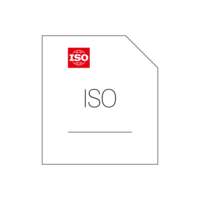

ISO/TS 10811-2:2000
Ausgabedatum: 2000 06 08
Mechanical vibration and shock — Vibration and shock in buildings with sensitive equipment — Part 2: Classification
This part of ISO/TS 10811 defines a method for the classification of shock and vibration in buildings from
measurements in accordance with ISO/TS 10811-1. A classification system of environmental vibration conditions
should serve as guidelines for designers, manufacturers and users of equipment sensitive to shock and vibration,
and for building constructors.
The types of shock and vibration considered are those transmitted from floors, tables, walls, ceilings or isolation
systems into an equipment unit. They can be generated by the following:
a) external sources, for example traffic (by road, rail or air), or building and construction activities such as
blasting, piling and vibratory compaction; the vibration response to sonic booms and acoustical excitations is
also included, as well as weather-induced vibration;
b) equipment for indoor use, such as punch presses, forging hammers, rotary equipment (air compressors, air
conditioner systems, etc.) and heavy equipment transported or operated inside a building;
c) human activities in connection with the service or operation of the equipment, for example, people walking,
especially on raised floors.
The frequency range of interest is normally 2 Hz to 200 Hz. Normally the dominant frequencies are less than
100 Hz because they represent the response of the elements in the building.
This part of ISO/TS 10811 deals only with vibration from a maximum amplitude point of view. The concept of
vibration dose (for example as for estimation of fatigue life) is not treated.
